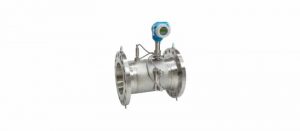Water lost from distribution networks is a serious ongoing problem for water companies worldwide. Faced with the need to match supplies to growing demand from rising urbanization, industrialization and irrigation for agriculture, governments are expecting water utilities to ensure that every possible drop of water is delivered to where it is needed.
Achieving this is a huge undertaking, with water being transported in pipelines that may stretch for thousands of kilometers across country that may be remote, difficult to operate in or hard to access. While some countries have made progress in tackling and fixing water losses in their networks, others have a lot of work to do in tackling water losses that can run into high double figures.
Improvement starts with measurement
Detecting lost water starts with choosing the right flow measurement method. Depending on the application, a variety of flow measurement techniques can be used, ranging from constrictive methods such as flumes and weirs for open channel systems, to orifice, mechanical, ultrasonic or electromagnetic flowmeters in closed pipe systems. Each of these have their own benefits and drawbacks.
The second major factor is where to measure. Performing measurements as widely as possible gives utilities the maximum amount of data on the location and severity of water losses, which can be used to develop methods and strategies to resolve them. It follows that any device used to measure flows must be as easy as possible to install, access and maintain, as water pipelines pass through both towns and cities as well as through remote areas that may not be as easy to access.

One of the most capable methods is electromagnetic flowmeters. Highly stable and able to be deployed in a range of installations, they offer several advantages.
A major attraction is their greatly enhanced accuracy with uncertainty as low as +/- 0.4% or better compared to other methods, as well as their high level repeatability throughout their operational life. Accuracies of this level are important when measuring for lost water to discriminate between legitimate consumption and leaks or other sources of loss.
Reliability is another important benefit. With no moving parts, they are not subjected to the wear and tear that affects mechanical designs. This reduces the maintenance burden and saves costs by avoiding the need for upstream strainers to filter sediment.
Electromagnetic flowmeters can also handle distorted velocity profiles without affecting accuracy, eliminating the need for defined lengths of pipeline upstream or downstream of the point of measurement as required by other technologies. As such, they can be fitted in locations with limited space, such as sites in towns and cities.
The benefits of digital
Several technological developments are making electromagnetic flowmeters even more attractive and cost effective.
One of these developments is the ability to use alternatives to conventional mains power. In the early 1990s, ABB launched the world’s first battery-powered device. Today, the latest generation of AquaMaster electromagnetic flowmeters can be used in remote locations with no need for a mains supply. Coupled with the benefits of a compact design, these options unlock the promise of enhanced flow measurement in many more locations. With a significantly lower power consumption than conventional mains-powered devices, they can also offer reductions in energy cost that can help further reduce their cost of ownership.
Getting measurement data from the devices is another important aspect. Manufacturers, including ABB, are looking at using Low Power Wide Area Network (LPWAN) band and Narrow Band Internet of Things (NB-IoT) technologies, which allow rapid exchange of measurement, configuration, and maintenance data with a much-reduced power requirement.
Further benefits are possible using Power over Ethernet (PoE). Using the same cable for both power and communications, PoE technology improves flexibility by enabling flowmeters to be installed wherever needed. Another development is ABB’s 4-wire Ethernet, which combines classic outputs with future communication protocols, increasing the longevity of devices by ensuring they are future-proof.
Flowmeters with Ethernet connectivity increase simplicity, flexibility, and reliability, while offering access to previously hidden data, such as measurement of density, conductivity, or concentration of the medium.
The time needed to commission, operate, and maintain electromagnetic flowmeters and the skills and training of technicians and operators is another factor affecting total cost of ownership. ABB’s AquaMaster4 electromagnetic flowmeter offers Near Field Communications (NFC) technology, allowing users to download configuration settings and retrieve logger data by tapping the transmitter with a smart device such as a phone or tablet loaded with ABB’s Velox app. This allows a variety of operational, logging, and diagnostic data to be downloaded, interrogated, and shared.
Combining pressure and flow
Effective pressure management is critical to getting the best performance from a water distribution network. Utilities are increasingly attracted by the prospect of combining flow and pressure measurement into one device, enabling users to download logged data and investigate flow and pressure activity for a specific period. Combining these possibilities with the ability to download and share this data through a smart device greatly improves the ability to assess and enhance network performance.
Water sustainability transformed
Ultimately, flowmeters that offer the highest accuracy help ensure that major investments in water supply infrastructures are wisely spent and that water is well managed for the benefit of all.
Source of Article



